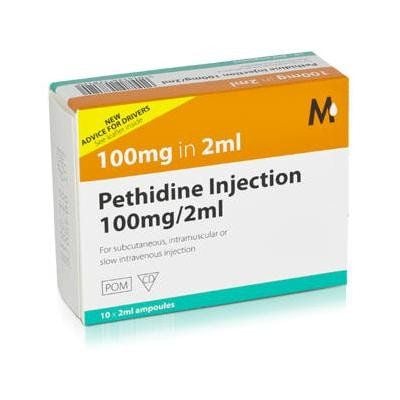This is an automatically translated article.
The article was professionally consulted by Specialist Doctor II Dinh Van Loc - Department of General Surgery - Vinmec Danang International General Hospital.
With today's medical development, most ENT surgeries are performed on the same day with local anesthesia or general anesthesia.
1. Notes before ENT surgery
Patients are required to go to the indications for examination and paraclinical tests before anesthesia for ENT surgery.
Usually the doctor will order the test: Complete blood count, blood type, fat set, liver enzymes, urine...
X-ray of the lungs, CT-Scanner (Nasal sinus surgery, ear...) Heart Audiometry for ear surgery Nasal pressure for nasal sinus surgery Vocal cord testing for vocal cord pathology Other laboratory indications on request.

Bệnh nhân tiến hành các xét nghiệm theo chỉ định của bác sĩ
Airway management
Airway sharing with surgeon, remote access and need to prevent airway obstruction are factors to be considered in airway management
See a doctor anesthesia examination. The anesthesiologist will explain to the patient and decide the best anesthetic method and type of anesthetic to use.
1.1 Notes before ENT surgery Patients are required to go to do the indications for examination and paraclinical tests before anesthesia for ENT surgery. Usually the doctor will order for tests: Blood count, blood type, urea, creatinine, blood glucose, liver enzymes, urine... X-ray of the lungs, CT-Scanner (Nasal sinus surgery, ear surgery... ) Electrocardiogram Audiometry if ear surgery Nasal barotrauma if rhinoplasty surgery Vocal cord testing if surgery for vocal cord pathology Other subclinical indications upon request.

Bệnh nhân phải tẩy sạch gel móng tay - chân trước khi phẫu thuật

Đảm bảo đường thở cho bệnh nhân trong suốt quá trình gây mê phẫu thuật
2. Notes during anesthesia
During ENT surgery, the anesthesiologist should pay special attention to the following: If there is a serious suspicion of a respiratory problem, intravenous induction of anesthesia should be avoided. Appropriate anesthesia is intubation while the patient is awake or laryngoscopy (meemf9 if patient cooperates) or induction of anesthesia with inhalational anesthetic, maintaining ventilation with the patient breathing on their own (patient uncooperative) In some cases equipment and ENT doctors are available for emergency tracheostomy. Airway is shared with surgeon. Patient is often placed away from the anesthesiologist. Standard equipment for ventilation of the lungs and adequate oxygenation of the patient while facilitating surgery in the nose and throat thanks to the shared airway between the anesthesiologist and the surgeon. Prophylaxis to prevent the patient from inhaling blood, pus or other materials into the lungs during surgery under anesthesia in the nasopharynx. Prepare fully and best the means and instruments for microsurgery in the ear and larynx. Caution should be exercised in patients who have undergone major head and neck surgery. The carotid sinus is often associated with hypotension, bradycardia, arrhythmias in sinus arrest, prolongation of the QT interval. The anesthetic will avoid these problems. Protect the patient's upper airway from partial or complete obstruction3. Notes after finishing ENT surgery
After surgery, the patient will be taken to the recovery room to monitor pulse, blood pressure as well as breathing rate. The patient can drink milk or eat some soft food such as porridge. With endoscopic rhinoplasty, the patient can go home the same day. Bleeding after tonsillectomy is a surgical emergency. Patients may develop hypokalemia and tachycardia before complications are noted, and anesthetic care includes fluid resuscitation and airway management. Provide analgesia and prevent postoperative nausea and vomiting (PONV) Postoperatively usually place the patient in a lateral tilt position and head low If postoperative edema is related to structures that may obstruct the airway breathing (eg, tongue) , the patient must be taken care of intensively, anti-edema should be treated with intravenous or inhaled corticosteroids, even re-intubation Take medication as prescribed, as directed by the doctor doctor, regular check-ups, on time. Cleaning the nose after surgery for a week, every day needs to be washed 2-3 times, in the first 3-6 weeks the patient should use physiological saline to clean (available at all pharmacies) For 2 In the first week after surgery, stay away from tobacco, alcohol, stimulants, smoke, dust, blowing your nose strongly, avoid vigorous activities. In the first 3 months after surgery, the patient may appear a few drops of fresh blood from the nose or a little sputum running down the throat. This is a normal symptom after surgery so there is no need to worry. However, if bleeding is a lot, you need to go to the nearest hospital for a doctor to check and treat promptly. Vinmec International General Hospital is one of the hospitals that strictly applies safe surgical anesthesia practice standards according to international guidelines. Vinmec has a team of experienced anesthesiologists and nurses, modern equipment such as: nerve detectors, ultrasound machines, Karl Storz's difficult airway control system, comprehensive anesthesia monitoring system GE's AoA (Adequate of Anesthesia) including monitoring of anesthesia, pain and muscle relaxation will deliver high quality and safety, providing patients with adequate anesthesia, no awakening, no residualmuscle relaxant after surgery.
After surgery, our patients always receive good analgesia care, prevent vomiting for patients at risk of nausea and vomiting after surgery, and have a heating system during and after surgery so most of the patients are very satisfied. heart, early mobilization, earlier recovery and discharge ...
Doctor Dinh Van Loc graduated as a General Doctor in Hue in 1990, graduated as a Specialist Doctor I in 2003 and a Specialist Doctor in Anesthesia II. resuscitation in 2017. Dr. Loc has advanced training in Anesthesiology and resuscitation and has more than 23 years of experience in pediatric intensive care anesthesia, cranial nerve anesthesia, and resuscitation anesthesia for patients. Liver resection, esophagectomy at the Hospital.
Any questions that need to be answered by a specialist doctor as well as customers wishing to be examined and treated at Vinmec International General Hospital, you can contact Vinmec Health System nationwide or register online HERE.














